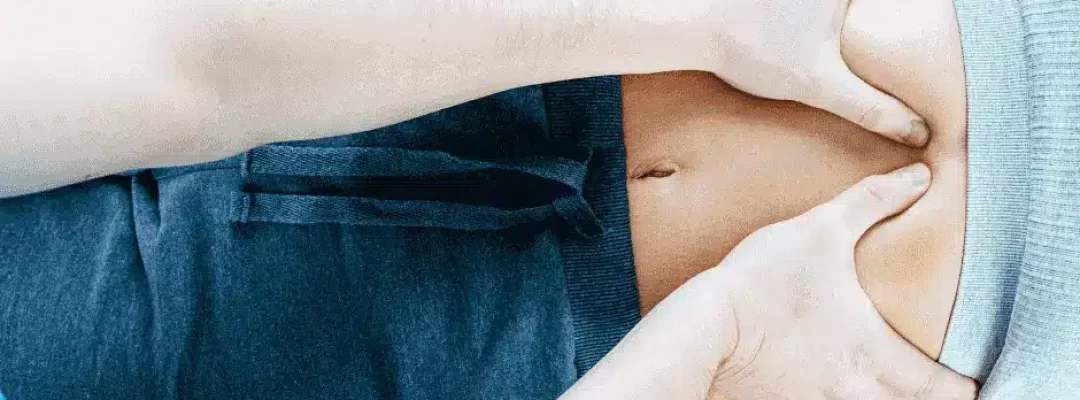Assisted stretching for fascia release is a powerful yet gentle way to improve your mobility and restore power to restricted muscles. Stretching fascia with assisted stretching (also known as partner stretching) is markedly more effective than without assistance. It’s easy once you learn how, but it can be scary when you first try to get someone to assist you! We’ll guide you through the process so that your first assisted stretch session flies by painlessly.
What is Fascia and How Can Assisted Stretching Help?
Fascia is a connective tissue that surrounds and supports the body’s muscles, bones and organs. It also acts as an energy conduit for the flow of blood, lymphatic fluid and nerve impulses.
Fascia has been called “the fabric of life” because it helps to hold us together physically as well as emotionally. When fascia becomes restricted or tight due to injury or repetitive use (such as sitting at a desk all day), it can cause pain in our joints or muscles–even if there is no obvious injury present on the surface of our skin! The good news is that there are many ways to treat this kind of restriction including self-care techniques like stretching which can help release tension in your fascia so you feel better overall both physically and mentally
The Benefits of Assisted Stretching for Fascia Release
Assisted stretching is a great way to improve your range of motion, reduce pain and improve posture. It’s also a great way to get started if you’re new to stretching or have never done it before.
Assisted Stretching for Fascia Release: Unlocking Your Body’s Hidden Potential
Types of Assisted Stretching for Fascia Release
Assisted stretching is a technique that can be used to help you achieve greater flexibility, but it’s not your only option. There are several types of assisted stretching techniques:
- Static stretching
- Dynamic stretching
- Myofascial release
Getting Started with Assisted Stretching for Fascia Release
Before you begin, it’s important to find an experienced practitioner. You should discuss your goals and any medical conditions with them so they can recommend the best course of action for you.
Assisted stretching for fascia release is not without risk, but it can be very effective when done correctly. The most common side effects include soreness and bruising in the area being stretched, as well as temporary numbness or tingling sensations in other parts of your body (known as “stretch reflex”). These symptoms should go away within 24 hours after each session; if they do not resolve on their own within this time frame then contact your doctor immediately!
Common Mistakes to Avoid When Doing Assisted Stretching for Fascia Release
If you’re new to assisted stretching, it’s important to pay attention to the following common mistakes:
- Stretching too quickly. If you feel pain or discomfort while doing an assisted stretch, stop and take a break before continuing. This can help prevent injury and make sure that your fascia is stretched properly.
- Stretching too far. When performing assisted stretches with a partner or trainer, don’t push yourself beyond what feels comfortable–this can result in injury as well!
- Ignoring warning signs such as pain or discomfort during an assisted stretch (or any other exercise). If something hurts while doing an exercise like this one, stop immediately and consult a professional before continuing on with your workout routine!
Tips for Successful Assisted Stretching for Fascia Release
To ensure that your assisted stretching session is successful, follow these tips:
- Stay hydrated. When you’re dehydrated, the fascia in your body becomes stiffer and more difficult to stretch. So drink plenty of water before and after each session.
- Warm up beforehand. Stretching cold muscles can make them more prone to injury or soreness afterward–and it’s important to keep those muscles limber so they can move freely during the assisted stretching exercises! A short walk around the block before beginning an assisted stretching routine will help prepare both mind and body for what lies ahead.
- Breathe deeply as you perform each stretch (and throughout). This will not only relax the body but also increase blood flow through major arteries that run through fascial layers in order to deliver nutrients directly into tissues where they’re needed most effectively.*
When to Seek Professional Help with Assisted Stretching for Fascia Release
If you are experiencing pain that persists after stretching, or if you are unable to stretch properly, it’s best to seek professional help. The same goes for if you aren’t seeing results after a few weeks of assisted stretching for fascia release.
If the above symptoms occur, it could be due to one or more of the following:
- You have tight muscles that need loosening up before they can be stretched safely and effectively
- Your body has been injured (e.g., sprained ankle) or stressed out by an illness such as flu/cold which makes it difficult for your muscles to relax so they can be stretched properly
Using Assisted Stretching for Fascia Release at Home
- Consult with a professional. If you’re interested in learning more about assisted stretching for fascia release, it’s important to consult with a professional who can guide you through the process and help ensure that you are doing it safely.
- Use props and support. When performing assisted stretches at home, be sure to use additional support from props like chairs or pillows so that your body is not bearing all of its weight while being stretched. This will help prevent injury and improve comfort levels during each stretch session.
- Practice regularly! Like any other form of exercise or physical activity, consistency is key when trying out new techniques like assisted stretching for fascia release–so make sure that every day counts!
Precautions for Assisted Stretching for Fascia Release
- Avoid stretching if you’re injured.
- Stop if it hurts.
- Don’t push too hard.
Conclusion
You’ve probably heard the saying “you are what you eat.” But in this case, it’s more accurate to say that you’re what you don’t stretch.
Assisted stretching for fascia release can help unlock your body’s hidden potential. It will allow you to move with greater ease, feel better about yourself and live a happier life overall!



